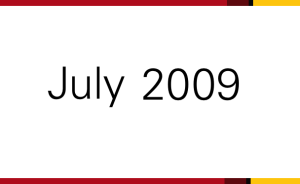Green Wave Public Diplomacy and the Iranian Election
Media Coverage of the Iranian Election and Opposition Protests
The June 12 presidential election in Iran has brought the impact of new media use by foreign publics to communicate with and advocate for one another to the forefront of global news media. Shortly after Ahmadinejad was pronounced the definitive winner of the election, the Iranian opposition, led by Mir Hussein Moussavi, took to the streets of Iran to protest the results. In an effort to suppress the coverage of these protests, the Iranian regime forbade foreign journalists from reporting on events throughout the country, disconnected cellular phone and SMS services, and slowed the internet to an almost unusable speed. These events gave rise to the coverage of the post-election protests through new media such as Twitter, YouTube, Facebook and Flickr. As a result, new media became the primary source for on-the-ground information not only for Iranians communicating with each other, but for traditional media sources and the global public.
Within two weeks of the Iranian election, the Pew Research Center’s Project for Excellence in Journalism (PEJ) produced an expanded version of their weekly New Media Index. Their research found that the topic of the Iranian elections dominated blogs, Twitter and other new media sites far more than it did in the mainstream media. PEJ also reported that 98% of the links on Twitter were about the Iranian elections and subsequent protests during the week of June 15-19 and that 63% of links posted in blogs and other new media sources focused specifically on the Iranian elections. According to PEJ, traditional media covered the Iranian elections to a much lesser degree, representing only 28% of press coverage for the same time period.
Public Diplomacy and New Media: International Broadcasting in the 21st Century
Traditional media outlets, unable to report on the opposition protests first-hand, were forced to rely on new media coverageof the post-election situation in Iran. The new “citizen journalist” became the link to the outside for the Iranian opposition. With the entire world relying on these new media sources, Twitter, along with YouTube, Facebook and Flickr, brought two-way communication between foreign publics to a new level. Traditionally, international broadcasting is dominated by broadcasting radio programs to foreign publics through government sponsored radio stations and websites such as Voice of America and Radio Free Europe. Governments have historically relied on these programs as well as editorials in newspapers and speeches in order to connect with foreign publics. The dominance of new media usage by the Iranian public demonstrates that foreign publics no longer need government intermediaries to listen to and connect with each other. The Iranian opposition not only reached out to foreign publics to hear their voices, but it called on people around the world to spread their message of opposition and relay information about events occurring in Iran. In short, public diplomacy has taken place on a massive global scale between foreign publics through the use of new media thanks to this hotly contested election.
And while the global public rallied in support of the Iranian opposition through new media, the new media providers were not far behind that same cause. Google and Facebook quickly incorporated Persian language into their capabilities to further support the Iranian public. Twitter also delayed a scheduled maintenance at the request of the U.S. Department of State so as not to disrupt information coming out of Iran.
An outpouring of support for the Iranian opposition was demonstrated on multiple levels through new media. Thousands of people around the world changed Twitter time-zone settings to that of Tehran, joined the Mir Hussein Moussavi Facebook group and created green avatars or profile pictures to demonstrate solidarity with the opposition. However, the newest and most compelling form of cyber activism came in the form of internet proxy servers. In order for many Iranians to evade government censorship they contacted Internet servers that relay connections through a different country. A young American from San Francisco, Austin Heap, continues to run private proxies and post the addresses on Twitter to support internet connections for 750 Iranians at any time. Quoted in The New York Times, Heap stated that “cyber activism can be a way to empower people living under less than democratic governments around the world.” This form of technological exchange has provided access to technology and information where they were unavailable. It also shows active support for the Iranian opposition’s cause, not just rhetorical or virtual support. People across the globe are reaching out to and providing tools for causes they support. This is a new way for diplomatic exchange to be pursued on a citizen level. While it is hard to verify the accuracy of information emanating from new media sources, the volume of online activity corresponding to the Iranian election has clearly demonstrated the power of online activism and the utility of new media in international broadcasting and public diplomacy.
Issue Contents
Most Read CPD Blogs
-
November 3
-
November 5
-
November 13
-
October 16
-
October 16
Visit CPD's Online Library
Explore CPD's vast online database featuring the latest books, articles, speeches and information on international organizations dedicated to public diplomacy.









Add comment